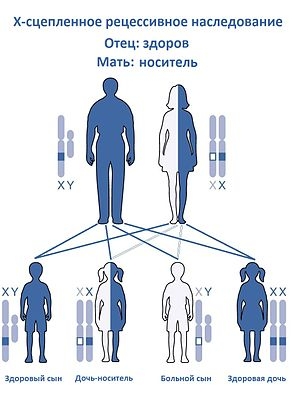Few people know that simple ichthyosis is the most common form of hereditary keratinization pathologies. Translated from the ancient Greek language «ichthys» means fish, since the manifestations of the disease resemble fish scales.
The pathogenesis of ichthyosis is based on several factors: gene mutation, amino acid metabolism disorder, endocrinopathy and vitamin A deficiency. spring period.
On estet-portal.com read in detail about the types and modern methods of diagnosis and treatment of ichthyosis.
Modern understanding of the pathogenesis of ichthyosis: studies of gene mutations
The genetic mutations that explain the development of ichthyosis are based on the expression of genes encoding different forms of keratin. The pathological process has not yet been fully explored, but scientists have identified several hypotheses of the genetic origin of ichthyosis.
For ichthyosis vulgaris, a characteristic deficiency of filaggrin – a structural protein of the skin that specifically interacts with keratins. The lack of this protein leads to a decrease in the amount of free amino acids that retain moisture. This explains the increased dryness of the skin in ichthyosis.
Follicular hyperkeratosis: symptoms, prevention and treatment
X-linked ichthyosis occurs when a mutation occurs in the steroid sulfatase gene, which results in excessive deposition of cholesterol sulfate and stronger bonding of the scales. With lamellar ichthyosis, a mutation of the gene that encodes the enzyme transgluitaminase of keratinocytes is detected. Such a genetic "breakdown" leads to the subsequent development of proliferative hyperkeratosis (accelerated advancement of keratinocytes from the basal layer of the epidermis to the stratum corneum).
We also investigate disorders associated with the processes of transcription of such markers as involucrin, cytokeratin.
Classification of ichthyosis based on clinical genetic data
Given the many factors in the occurrence of diffuse keratoma, the disease is divided into two large groups. Allocate hereditary and acquired ichthyosis.
- Hereditary ichthyosis includes the following forms:
• vulgar (autosomal dominant type);
• lamellar or ichthyosis fetus (autosomal recessive type);
• X-linked recessive;
• congenital ichthyosiform erythroderma;
• spiny;
• linear envelope;
• one-sided;
• ichthyosis at the heart of syndromes (Netheron, Refsum, Rud, Sjögren-Larsson, Popov syndromes).
2. The acquired form of ichthyosis includes:
• symptomatic conditions (hypovitaminosis A, malignant neoplasms, endocrinopathies);
• senile form;
• disk shape.
The most common form is ichthyosis vulgaris, which accounts for up to 80% of all cases.
Severe, middle and late stages of the disease are also distinguished.
You may also be interested in: What is the danger of the hereditary disease ichthyosis

In addition to the clinical picture, anamnestic data are of great importance for the diagnosis of ichthyosis. Important to know about:
• presence of ichthyosis in the patient's relatives;
• age of the first manifestations of the disease;• seasonality of ichthyosis;
• the presence of concomitant pathology (allergies, gastritis, enterocolitis, cholecystitis).
The gold standard for diagnosing diffuse keratoma is histological examination.
Thus, the histological picture of ichthyosis vulgaris consists of moderate hyperkeratosis with the formation of keratotic plugs in the mouths of the hair follicles, thinning or absence of the granular layer.In addition, electron microscopic examination is used, as well as an assessment of humoral and cellular immunity.
Prenatal or antenatal diagnostics are used for early detection of congenital ichthyosis.
Modern approaches to the treatment of ichthyosis: complex symptomatic therapy
To date, there is no etiotropic treatment of ichthyosis, only symptomatic therapy is used.
External administration of keratolytic agents is recommended, which contain 2% & ndash; 10% urea, salicylic 5%, lactic 8% and glycolic acids 2 times a day .
Telegram. The treatment of ichthyosis involves the use of special hygiene products containing naftalan, Japanese Sophora extract and natural oils. After water procedures, it is necessary to apply emollients (cream with ergocalciferol, ointments with retinol 0.5%, petroleum jelly). weeks, after 3-4 months a second course is carried out.
Medicated baths (salt, oil, sulfide) are used as physiotherapy.
Patients are shown general moderate ultraviolet irradiation, as well as the elimination of serious traumatic and stressful situations from life.







Add a comment